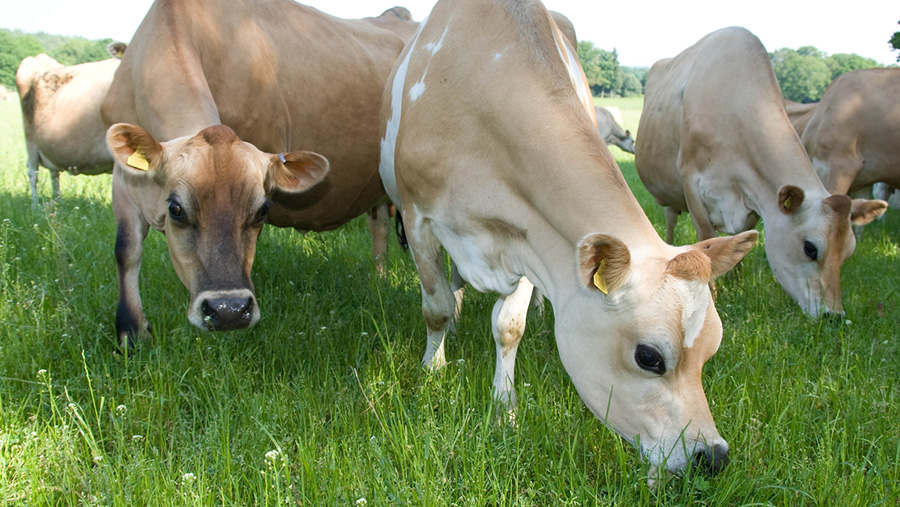Spring rotation planner vital for managing winter grass growth
 © Tim Scrivener
© Tim Scrivener A spring rotation planner (SRP) is going to be an important tool in helping dairy grazers manage pasture quality this spring and cut costs.
Traditionally used at the start of turnout in February, a spring rotation planner will help maximise grass quality and quantity throughout the season by matching supply and demand, says Pasture to Profit consultant Piers Badnell, from the Livestock Improvement Corporation UK.
“The spring rotation planner helps farmers manage pasture at a time where growth is increasing and identifies how much area to allocate animals and how to increase area over time,” he adds.
And while spring grazers will be familiar on SRP all herds can actually benefit from using one, including all-year and autumn-calving herds, providing they have a significant number of cows to graze.
“The fundamental thing is for cows to get around the grazing block by balance date (where grass supply equals demand),” explains Mr Badnell.
First round key
Due to the unprecedented levels of growth this autumn/winter it is imperative that cows achieve a good residual on the first round to maintain quality for subsequent rounds, says Mr Badnell.
He says the aim should be to graze fields down to 3.5 or 4cm. In comparison to residuals of 4.5-5cm this has proven to achieve 10% more leaf.
If you get beyond balance day and you don’t hit “magic numbers” you will have too much grass, which will reduce in quality, warns Mr Badnell.
See also: Pre-mow grazing helps cows yield 70% of milk from forage
“[In this instance] you will have to do something about it such as mow, which costs money.”
Conversely, if you have a shortage of grass it will also cost money to supplementary feed cows, he explains.
“It is imperative not to deviate from the SRP because if you are too aggressive you will run out of grass and if you’re not aggressive enough then you will have surpluses too early [surpluses should not occur before balance day], which cost money.”
Hitting average cover targets
To ensure this doesn’t happen he advises farmers to check their average covers.
“In a season like 2015-16 where we have had a very mild winter and growth rates higher than we would expect, covers are higher than expected so enabling us to feed more a cow.
“It is important to get the cover down as we do not want to be taking too high a cover beyond balance day as this will mean too much grass and the need to bale more surpluses,” Mr Badnell says.
Average covers should be about 2,150kg DM/ha in early February and by balance day, which occurs for most about five days before or after the 10 April, they should be 1,840kg DM/ha, adds Mr Badnell.
He says a combination of increasing area, reducing round length and balancing by average cover should deliver the optimum grass covers to maximise the season.
“If grass covers are still too high half way through this first 60 days then allocate a slightly bigger area to bring the average cover back in line with where it should be.”
